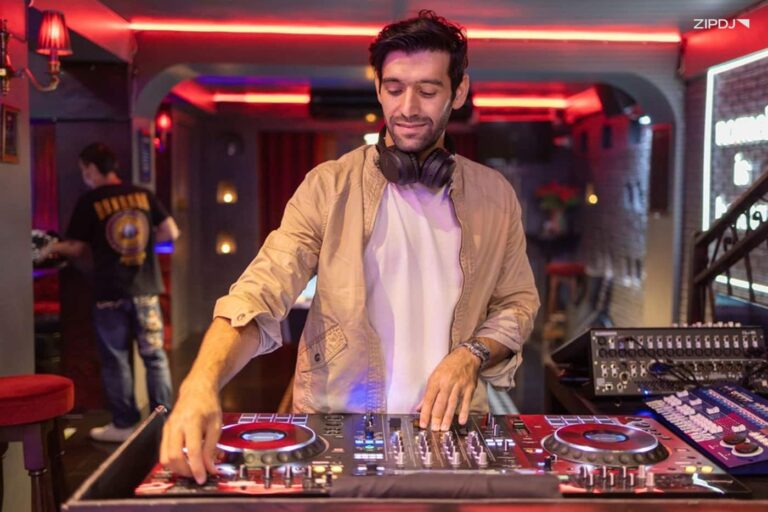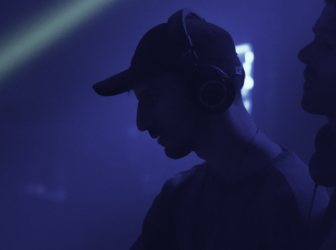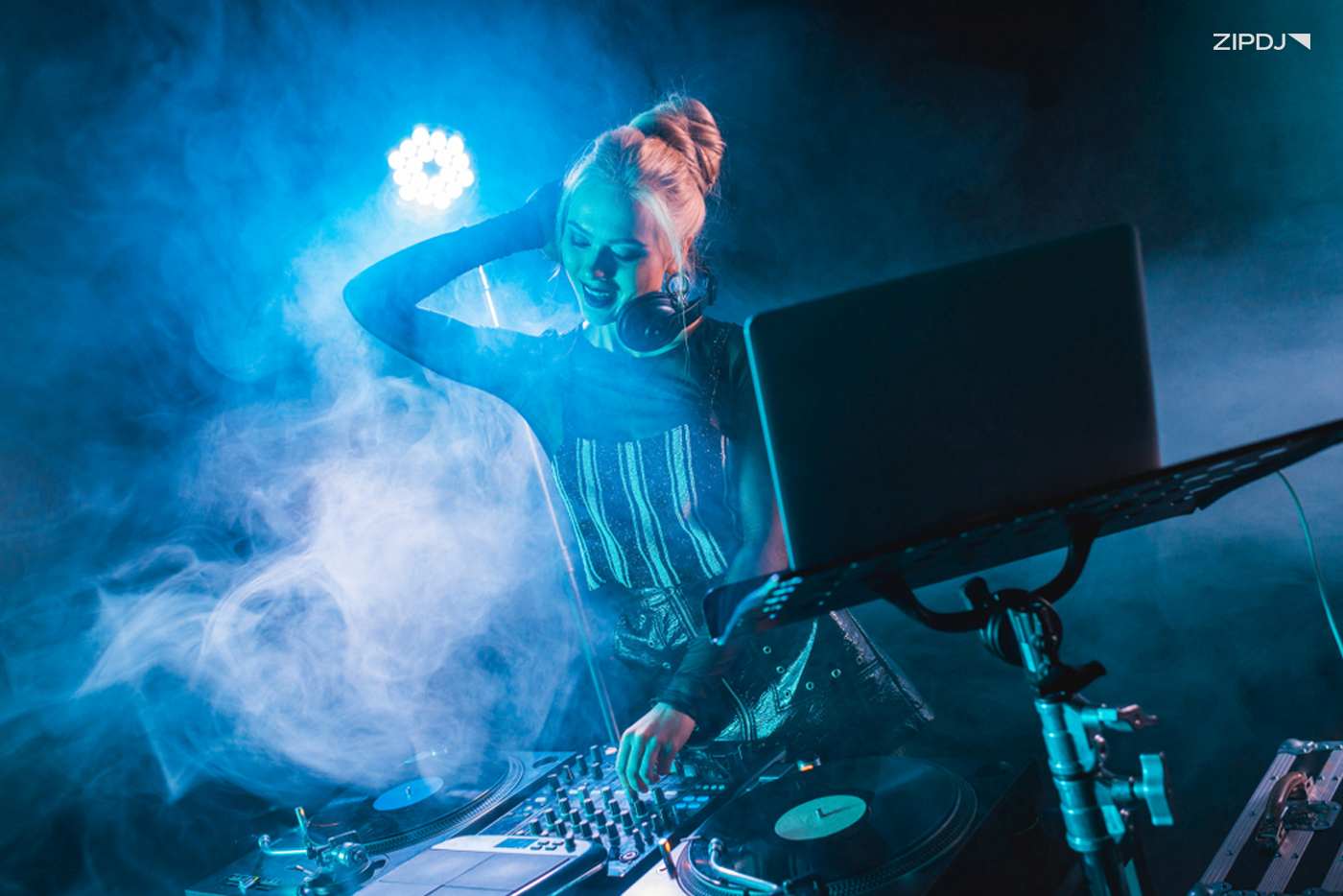The Psychology of Music From A DJs Perspective

DJing is all about crafting an emotional journey for the audience, so understanding the psychology of music is vital for delivering the best experience.
Whatever your music preference or musical ability, the principles outlined in scientific research can be powerful tools to unlock your potential.
In this article, we’ve broken down everything you need to know about the psychology of music to help you master the art of DJing.

The Psychology of Music From A DJs Perspective
Music psychology is a rich and varied field of study, from the impact of music therapy to how songs can create an emotionally resonant experience.
We’ve covered everything from sound physiology to how it can impact well-being and cognitive tasks to help you become the best possible DJ.
So, whatever your DJing style, here’s everything you need to know about the psychology of music in 2025:
1. How We Hear Sounds
Having a clear idea of how people hear sounds is a fundamental aspect of becoming a DJ and knowing what songs will have the greatest impact.
While most people are aware of sound waves and the basic biology behind hearing, understanding the nuances is very beneficial.
Here’s a brief overview of the potential power of sound waves and how the ear works to interpret them on a biological and anatomical level.
The Power of Sound Waves
Sound travels through the atmosphere in what is commonly called waves or pulses, often likened to waves rippling through water.
As they move through the air, these waves become wider and taller, becoming less powerful as the pressure dissipates over space.
Music is comprised of multiple sound waves, from bass lines and vocals to other melodies and percussion, each competing for your attention.
In combination, this sound design can significantly impact emotions as it passes through the ear and is interpreted by the brain.
The Inner Workings of the Ear
Once a sound wave passes through the ear canal and hits the eardrum, it is processed by the body through the middle ear and inner ear.
The sound vibrates in the eardrum’s minuscule bones, amplifying the sound and passing it to the cochlea, shaped like a nautilus shell.
At this point, hairs known as stereocilia move and open pores to release neurotransmitters that are connected to the brain.
The final step in the process of how the ear works comes when the brain processes the sounds from the auditory nerve, a process that occurs in milliseconds.
2. How Our Brain Interprets Music
The brain’s ability to interpret music is vast and far-reaching. It involves various brain regions, each with its own specific responses.
People venturing into DJ production can benefit from how these control emotions in everyday life to craft songs with real impact.
The Amygdala
The amygdala is best characterized as the emotional control center of the human brain, managing negative and positive emotions in human beings.
Also used to determine our fight or flight responses, it’s a fundamental component of the music-listening process and triggers emotional responses.
Intense, ominous music can promote feelings of primal fear, while meditative music’s effect is likely to conjure up calm and measured emotions.
The Temporal Lobe
A great deal of music psychology research has been performed around its impact on the temporal lobe, where language and comprehension are handled.
Here, music perception is centered around the meaning of lyrics or analyzing melodies and patterns more objectively.
If the amygdala represents music’s ability to impact us on an instinctive level, the temporal lobe is how we rationalize music preferences.
The Cerebellum
The vast majority of DJs are dedicated to getting people moving on the dance floor, and it’s here where the cerebellum comes into play.
This area of the brain is tied to movement, and the trigger for tapping your feet or dancing is rooted in music psychology.
It’s also the section of the brain that impacts your music memory, whether you’re learning how to scratch DJ or overcoming memory loss.
The Hippocampus
The final section of the brain to consider when learning about music cognition is the hippocampus, which regulates emotional responses and triggers.
Music resonates in the brain because the hippocampus is deeply rooted in short- and long-term memory and its interaction with music.
The next time you listen to background music and feel an emotional response, chances are it has triggered a memory association.
3. Music Across Cultures
Listening to music is a consistent feature of cultures worldwide, from pre-civilization tribes through to modern life in busy metropolises.
While the style of music can vary wildly between cultures, its ability to impact emotions and tell a story about lived experiences remains deeply profound.
Understanding this on a deeper level is a great way to improve your DJ performances through storytelling and emotionally resonant music.
Great music can speak to a group’s collective memory, creating a shared experience and enhancing the pleasure and well-being of a crowd.
Understanding different musical behaviors can also help you build a rich and vibrant collection of tracks that take listeners on a journey.
4. The History Of Music Therapy
With the aforementioned research into the anatomy and psychology of music understood, it’s no surprise that music therapy has a rich history.
Its origins lie in Ancient Greece with the works of Aristotle and Plato, and ritual healing has continued throughout the ages.
More recently, psychologists have been incorporating music for decades to help with everything from eating disorders to depression.
In the early 20th century, the Bonny Method of Guided Imagery and Music laid the groundwork for a humanistic approach to music therapy.
Over the following years, the practice evolved to include therapy for childhood development, healing, and generating other physiological responses.
Today, music therapy has been used for everything from handling trauma to assisting people with achieving their personal and professional goals.
By grasping the therapeutic power of music, you can also navigate the DJ industry with a greater chance of realizing your ambitions.
5. Improving Cognitive Performance
There is an abundance of music cognition research from institutions ranging from the Oxford University Press to Harvard medical journals.
This research has outlined its positive impact on various psychological phenomena, from reducing stress to managing physical and emotional pain.
It can also help with motivation, making it a great tool for quickly mastering online DJ courses and focusing on the key information.
Many cognitive psychology studies support the power of music to improve the speed at which information is processed.
For example., playing background music while conducting other activities taps into memory and processing to enhance overall cognitive performance.
This positive effect on a person’s mood lies in a subconscious level, inducing a positive and happy response when the right music is played.
Genres such as classical music enhance these musical stimuli while disturbing music such as death metal has a negative impact.
Understanding how different genres can impact cognitive psychology is a fundamental aspect of music education relating to mental health.

6. Reducing Stress
Music psychology and stress management and reduction are the most widely known aspects of the research into this relationship.
Hundreds of scientific studies have revealed how music impacts the human stress response and the autonomic nervous system.
These studies have demonstrated the power of music to speed up recovery from stress, particularly through the use of high-frequency music.
By lowering cortisol and significantly increasing oxytocin levels, this style of music leads to impressive observable levels of stress relief.
7. Enhancing Motivation
Anyone who enjoys working out in the gym or heading out for a jog will have direct experience of the link between music and motivation.
From an exercise perspective, high-tempo music can help regulate the heartbeat and match the workout to the music’s rhythm.
It can also help with general tasks and concentration, from studying hard for exams to working through spreadsheets for an important deadline.
Whether you’re focusing on building a home DJ setup or planning an upcoming event, listening to music can help motivate you to achieve your goals.
8. Relieving Pain
Managing physical and emotional pain is an important role in dealing with DJ mental health, and music can be an effective source of treatment.
Many studies support this notion, with patients who have been exposed to relaxing music showing measurable improvements in their mobility.
By listening to music before performing tasks, patients suffering from physically debilitating conditions report significant reductions in discomfort.
This improves slightly when the patient can select their favorite music before performing the tasks centered around pain management.
9. Altering Moods
Understanding how music is a powerful tool for altering moods is an important aspect of DJing and appreciating music in general.
It can help you organize your playlists effectively by categorizing tracks in moods that are optimal for specific styles of DJ sets.
There’s a wealth of research linking music and mood alteration, both on an individual level and through its application in a social setting.
Shared musical experiences at concerts and other music settings create a collective atmosphere and vibe familiar to anyone who’s been to such events.
When combined with dancing, music’s profound ability to positively affect mood connects and empowers the participants.
Likewise, performing music, whether DJing or playing an instrument, is another powerful music therapy tool for enhancing positive moods.
10. Music Psychology & DJing
Now that we’ve discussed how music can affect various human emotions, let’s explore these factors in the context of DJing.
One of the art form’s key roles is serving as a music curator, compiling extensive playlists of tracks that impact the dance floor.
DJs understand better than most people how to get a good reaction from strangers and when to drop the right track for a given moment.
They deeply appreciate aspects of music such as tempo, key, and transitions and how these factors can be used to great effect.
Let’s examine the psychology of music in the context of DJing and how it can be applied to build enthusiasm and excitement for audiences.
Crafting An Emotional Journey
If a core theme has emerged in the study of the psychology of music, it is the art form’s ability to create deep and resonant emotional experiences.
This is especially true of DJs, who play a vital role through their interaction with the audience and how they select tracks accordingly.
A compelling and engaging emotional journey works best when a DJ set modulates the tone and mood to create ebbs and flows in the music.
Typically, this means beginning with slower-tempo music and more expressive use of melodies before moving into faster, more minimal beats.
At the same time, this overarching sense of pacing is broken down into smaller constituent parts that incorporate similar structural elements.
Building up tension before a big drop and using breakdowns are just two of the technical methods DJs commonly use in this regard.
While the approach varies depending on the genres a DJ plays, the general principles and techniques remain the same.
Nostalgia As A Powerful Tool
We’ve touched on music psychology’s ability to trigger deep-rooted memories and the associated emotions that come with them.
This power to trigger memories is intrinsically tied to nostalgia, which can be an incredibly powerful tool when compiling a DJ set.
The history of DJing is intertwined with many different musical styles and genres that audiences are likely to feel a strong attachment to.
Understanding this can help DJs select iconic tracks from their preferred genres that will resonate with the crowd through a nostalgic framework.
For club DJs, this can mean dropping a tried-and-tested dancefloor banger that dominated the charts when it was first released.
On the other hand, anyone who has learned how to DJ a wedding is well aware of how certain songs frequently come up in requests.
Either way, the principle of using nostalgia as a powerful tool remains the same and can be developed over time through experience with audiences.
Getting The Crowd Grooving
In the same way that DJing requires creating an emotional journey, it also involves using tempo and pace to establish and build a groove.
Most of the best music genres for DJs are built around driving and dynamic rhythms that build anticipation and atmosphere throughout a set.
This tempo-based approach to music is inherent in its relationship to movement, getting the crowd dancing and waiting for the next track.
Closely associated with the heartbeat, it can increase the audience’s energy levels by increasing the tempo as the mix progresses.
Likewise, the percussive elements determining the tempo can enhance the audience’s response to DJ sets.
Great electronic music often includes rapid hi-hats and high-frequency percussive effects complementing the driving kick drums.
The net result is a complex but highly effective interaction of musical elements that work on a subliminal level to drive the crowd’s energy.
Building Anticipation & Surprise
One of the fundamental skills underpinning the art of DJing is knowing how to build anticipation and introduce the element of surprise in a mix.
This includes knowing when to manage the ebbs and flows of a DJ set and building up the crowd’s expectations with dynamic sound design.
Unexpected song choices can help keep the audience on their toes and eager to discover the direction of your DJ set moving forward.
Some DJs accomplish this feat by mixing up their genre selection so the crowd isn’t able to second-guess what track might come next.
On the other hand, professional DJs are familiar with the technique of using unique transitions to make their mixes more innovative and creative.
Effects, samples, and other tricks can enhance transitions beyond simply beat matching and fading between tracks.
Likewise, DJs who collaborate with live musicians and experiment with instruments inject additional elements of surprise into their mixes.
Some also introduce visual media to their sets, from virtual and augmented reality elements to motion graphics displayed on projector screens.
By combining these elements in a unique and original manner, a potentially routine DJ set can be taken in exciting and creative directions.
Summary
Whatever type of DJ you are, understanding the psychology of music can help you to deliver impressive sets and manage your own mental health.
Incorporating the information in this article into your DJing habits and lifestyle can enhance your cognitive abilities and help you master your mixes.
As your experience grows, your ability to integrate music psychology and its many benefits will become an intuitive aspect of your creative process.
Not a member ?
Join Today for Unlimited Music Downloads. Visit zipdj.com for more information.



